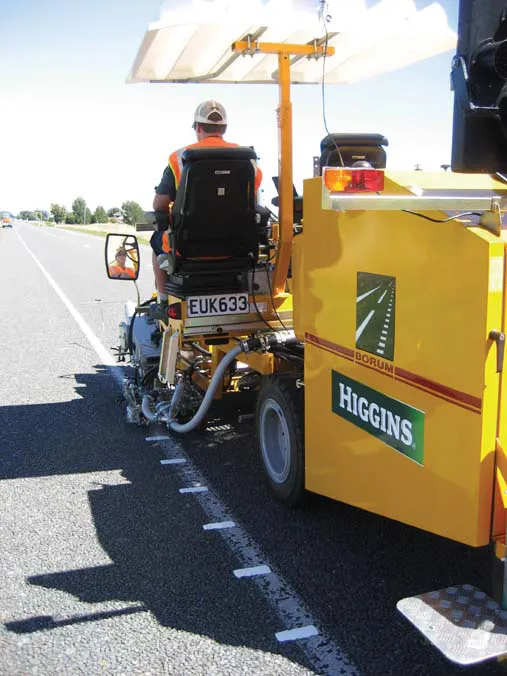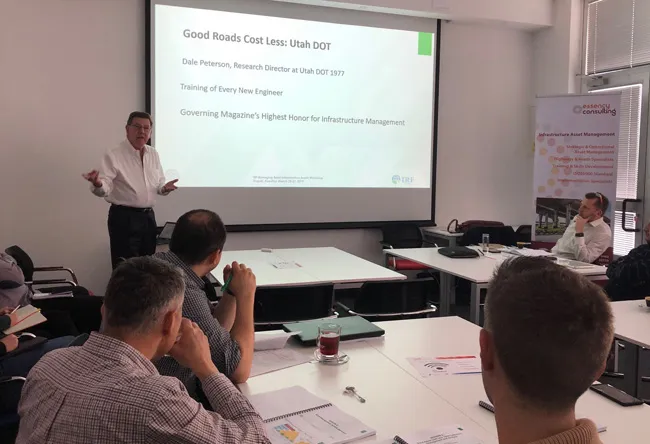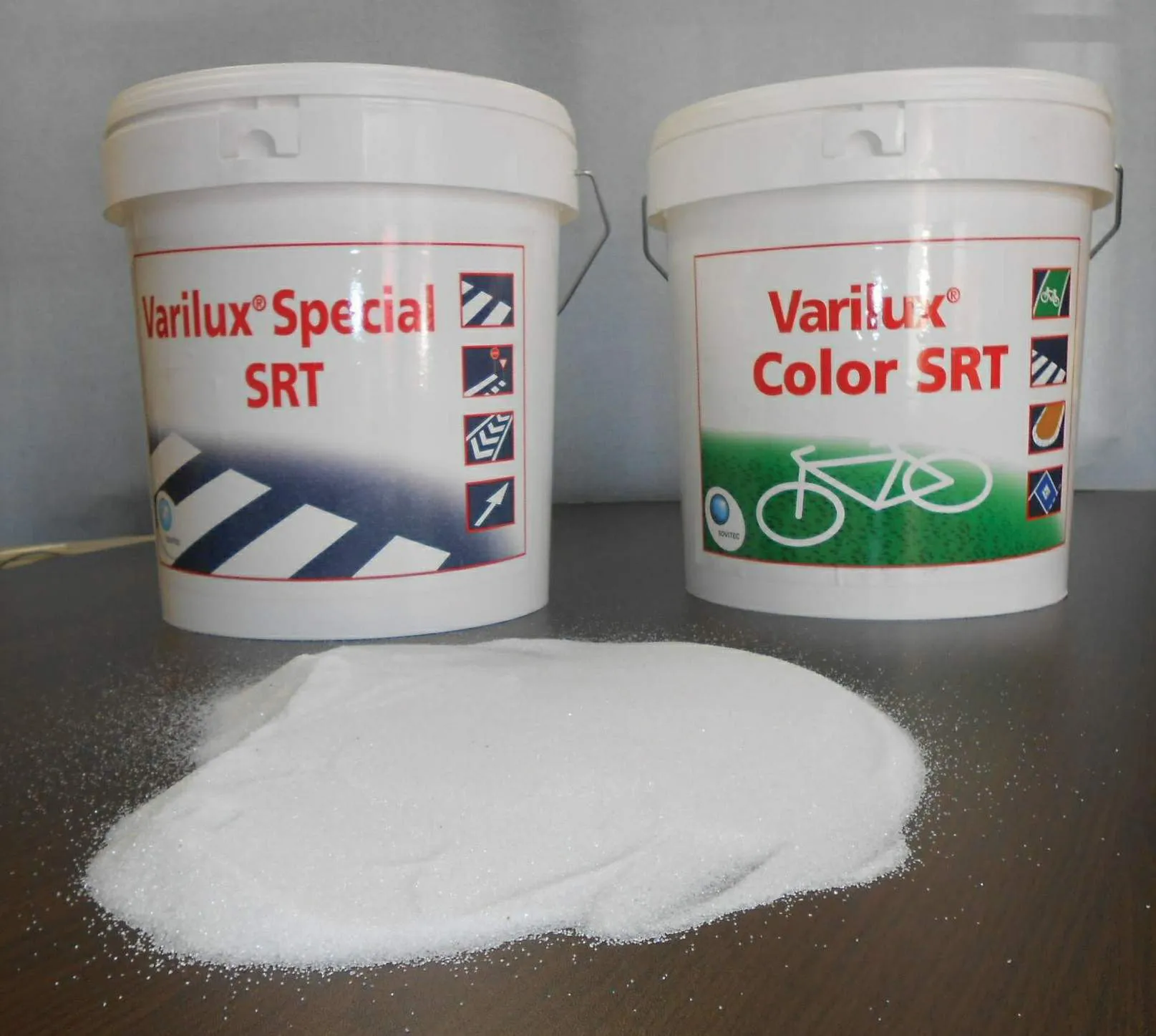Higgins Contractors of New Zealand has made rapid use of its new Borum BMT 350 road marking machine, the first of its type in the country. The machine was bought recently to undertake contract work for the New Zealand Transport Authority and local councils, following a meeting Higgins had with Borum representatives at the Intertraffic exhibition in Amsterdam, the Netherlands, a year ago.
February 27, 2012
Read time: 2 mins

Higgins Contractors of New Zealand has made rapid use of its new 173 Borum BMT 350 road marking machine, the first of its type in the country.
The machine was bought recently to undertake contract work for the New Zealand Transport Authority and local councils, following a meeting Higgins had with Borum representatives at the244 Intertraffic exhibition in Amsterdam, the Netherlands, a year ago.
"New Zealand is a small market and a significant distance from Europe. As a consequence, a range of attachments were quoted for including the BMT 350 with Audio Tactile Profile (ATP), spray & extrusion attachments along with the pre-heater system and power station. This was soon followed by a quote for a structured marking unit. Higgins Contractors now has the luxury of one machine with many attachments," says Shane Higgins.
Arriving in New Zealand in January, the Borum BMT 350 had within five days achieved a New Zealand Road Marking Federation certification for ATP and extrusion applications. Prior to this Higgins' workshop manager Peter Collis and operator Jon Price had visited the Borum factory in Denmark for training.
Soon after its arrival in New Zealand, the machine was working on Higgins' first contract with the New Zealand Transport Authority for ATP profile markings on SH 1 at the southern end of New Zealand's North Island.
The machine was bought recently to undertake contract work for the New Zealand Transport Authority and local councils, following a meeting Higgins had with Borum representatives at the
"New Zealand is a small market and a significant distance from Europe. As a consequence, a range of attachments were quoted for including the BMT 350 with Audio Tactile Profile (ATP), spray & extrusion attachments along with the pre-heater system and power station. This was soon followed by a quote for a structured marking unit. Higgins Contractors now has the luxury of one machine with many attachments," says Shane Higgins.
Arriving in New Zealand in January, the Borum BMT 350 had within five days achieved a New Zealand Road Marking Federation certification for ATP and extrusion applications. Prior to this Higgins' workshop manager Peter Collis and operator Jon Price had visited the Borum factory in Denmark for training.
Soon after its arrival in New Zealand, the machine was working on Higgins' first contract with the New Zealand Transport Authority for ATP profile markings on SH 1 at the southern end of New Zealand's North Island.









